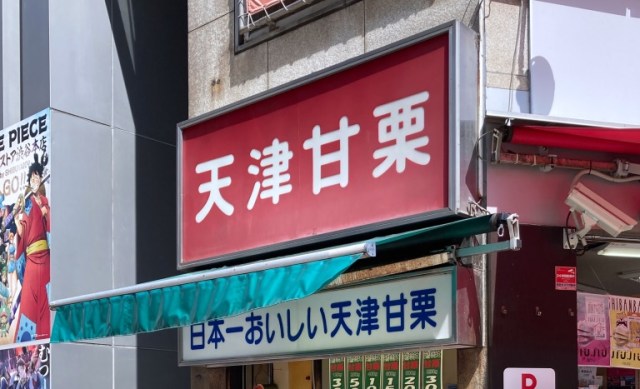
It’s been right there at the Shibuya Scramble intersection for decades.
Commercial real estate doesn’t get much more desirable than a spot by Tokyo’s Shibuya Scramble intersection. As one of the busiest crosswalks in the world it boasts a tremendous amount of foot traffic, and the Scramble’s prominent presence in travel programs and movies makes it an attractive spot for any Japanese company looking to boost their global prestige and brand recognition.
So if we told you that one tenant has held on to its spot on the scramble for decades, you might be imagining it’s one of the most famous and fashionable organizations in Japan.
▼ This tenant here, underneath the arrow

But this isn’t the location of a trend-setting boutique, evergreen tech company, or finger-on-the-pop-culture-pulse talent agency. No, this is…
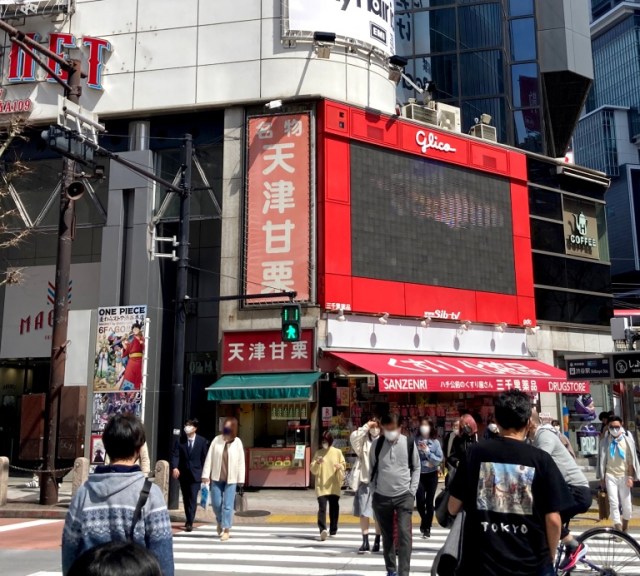
…Tenshin Amaguri (天津甘栗), a stand selling amaguri, or sweet roasted chestnuts.
Tenshin Amaguri has a handful of branches in the Tokyo area, but this one, in Shibuya, was the first. When our ace reporter Mr. Sato first moved to Tokyo 30-someodd years ago, it had already been in the neighborhood for as long as any of his then-new Tokyoite friends and coworkers could remember. The faded red color of the shop’s sign is further proof that’s it’s been part of the sheet-metal foliage of Shibuya’s concrete jungle for a long, long time.
But while Mr. Sato has walked by Tenshin Amaguri countless times in the decades since he first set foot in Shibuya, he recently realized that he’s never actually bought any of their chestnuts, so the next time his pursuit of journalistic excellence took him to this part of town he decided to change that.
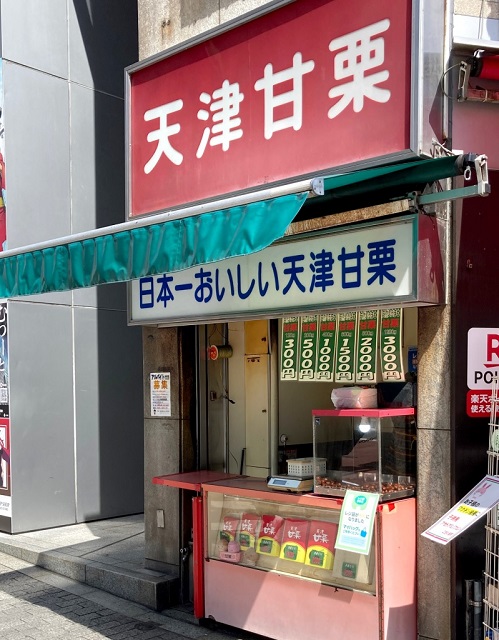
In all these years, Tenshin Amaguri hasn’t forgot its humble roots, and even today the store looks just as simple and unassuming as it ever has (though the sign underneath the awning does boast “The most delicious sweet roasted chestnuts in all of Japan”). 300 yen (US$2.40) gets you 100 grams (3.5 ounces) of chestnuts, but 200 grams is only 500 yen, a 100-yen savings. There’s no economic advantage at the next step, 400 grams for 1,000 yen, but that’s what Mr. Sato opted for anyway, since he wanted to test out a theory when he got back to the office.
As the staff handed Mr. Sato his box of chestnuts (you can get them in a bag, too if you prefer) he asked how long Tenshin Amaguri’s Shibuya shop has been in business. “About 60 years” they told him, making his 400-gram box feel even more substantial with the weight of history the chestnuts represent.
Once back at SoraNews24 headquarters, Mr. Sato took a moment to admire the box’s classy wrapping, decorated with the kanji for kuri/chestnut (栗).
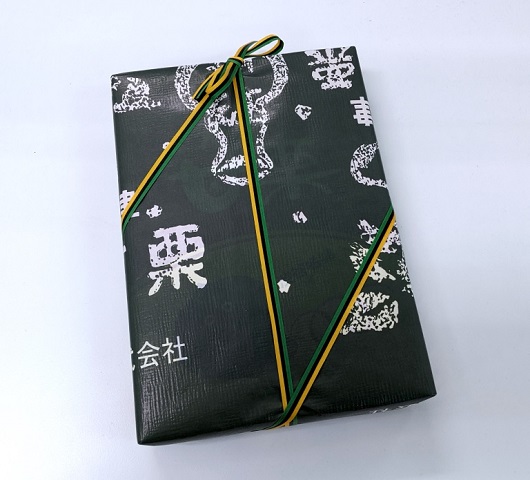
He then removed the wrapper and took another moment to appreciate the cute playfulness of the mascot character, wondering if he has a name like “Kurisuke” and concluding that he’d be happy to wear a T-shirt with this design.

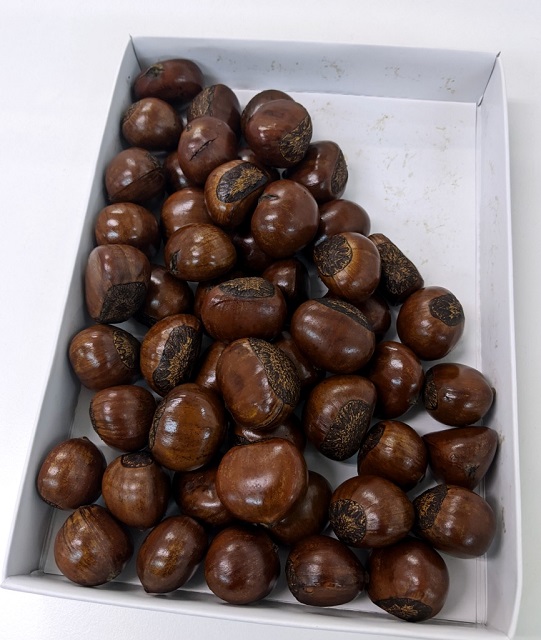
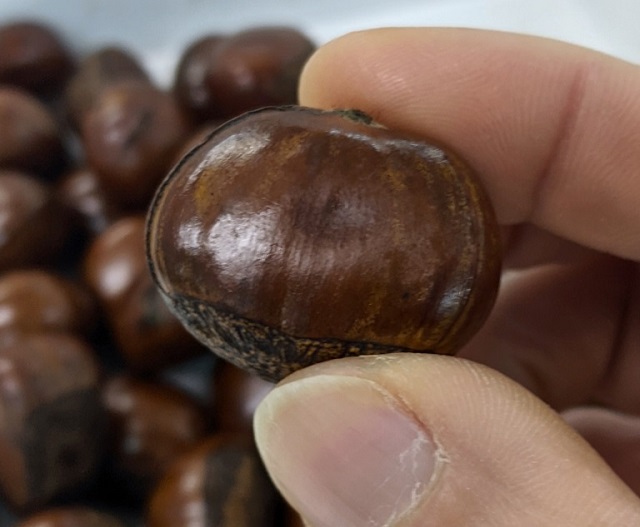
Inside, obviously, were a whole bunch of chestnuts. There’s also a paper diagramming the easiest way to peel them, which is to make a horizontal incision with your thumbnail, then pull the edges of the opening outward.
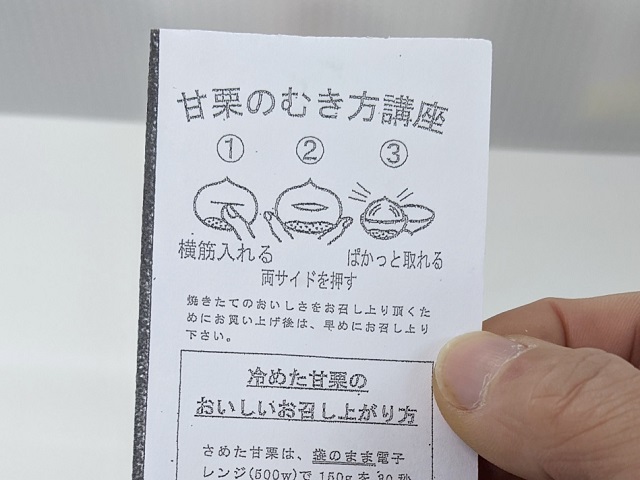
There was also a utensil in a wrapper with kuritsume, or “chestnut nail,” written on it. It’s a plastic piercer/spoon that you can use to break the chestnut’s skin in order to peel it, and also to scoop the nut out.
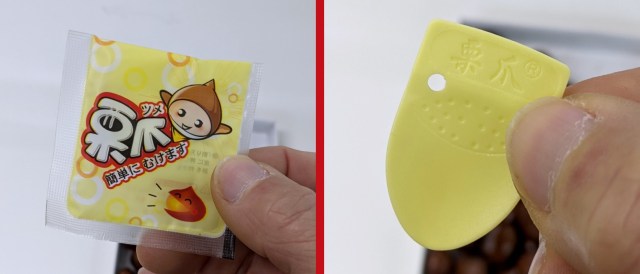
Mr. Sato hadn’t eaten amaguri since he was a kid, but apparently peeling one is just like riding a bike, as his finger muscles remembered how to deftly do the job without bruising or tearing the edible inside.
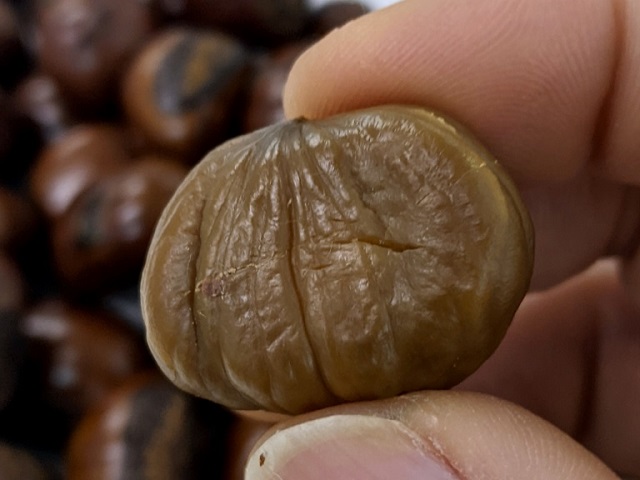
The amaguri was a nostalgia trip for his taste buds too, firing his flavor receptors with its robust nutty sweetness for the first time in far too long, and that brings us to why he bought so many.
Like we said earlier, Mr. Sato has been living in Tokyo for roughly 30 years, and until this day had never once actually eaten Tenshin Amaguri’s chestnuts. He had a hunch that that was true for a lot of other members of our staff, so he went around the room handing out samples and asking everyone if they’d ever bought a bag or box from the Shibuya shop.
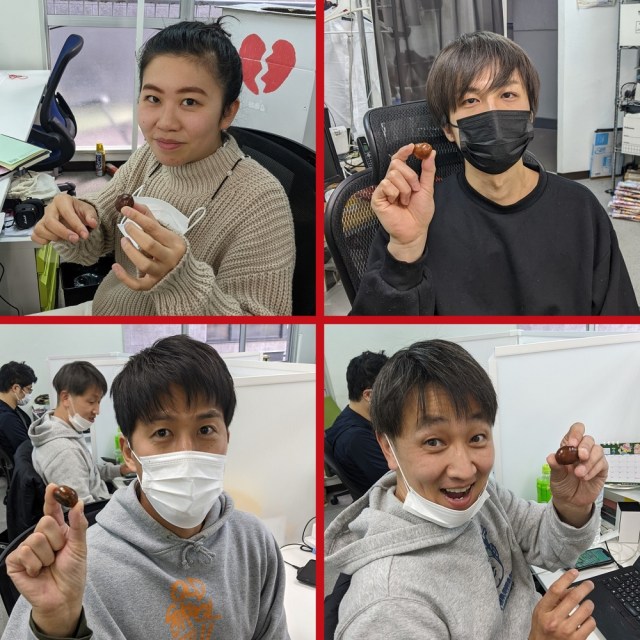
Sure enough, out of the eight other people at work that day to share in the amaguri bounty, only one of them, fellow veteran staffer Go Hatori (pictured at the bottom right below), had ever eaten them.
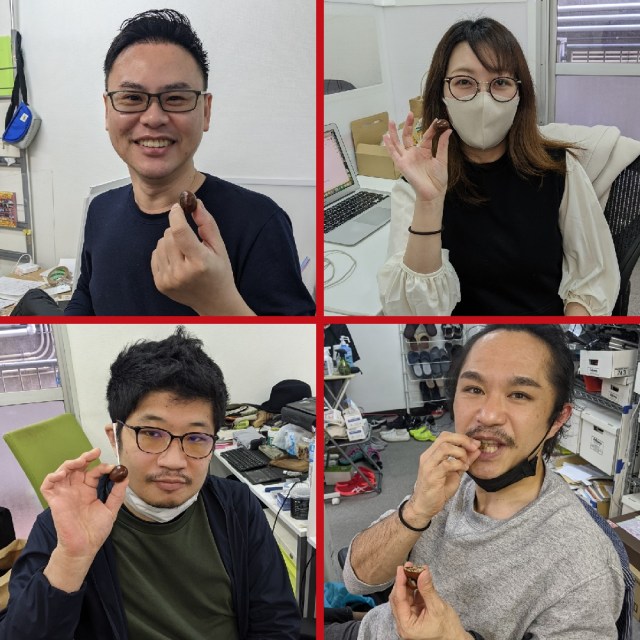
With Tenshin Amaguri’s Shibuya shop having been in business for so long, it’s easy to start assuming it’ll be there forever. As we’ve seen with recent closures of other once seemingly permanent institutions like Sega’s giant Akihabara and Ikebukuro arcades, or the awesome Oedo Onsen Monogatari and Toyota historic car museum in Odaiba, when the end comes, it can come quickly. So if there’s some local landmark you find yourself walking right past time and time again, whether it’s in Tokyo or some other part of the world, maybe the best time to check it out isn’t “next time,” but right now.
Shop information
Tenshin Amaguri (Shibuya Hachikomae branch) / 天津甘栗(渋谷ハチ公前本店)
Address: Tokyo-to, Shibuya-ku, Jinnan 1-23-8
東京都渋谷区神南1-23-8
Open 10 a.m.-9 p.m.
Photos ©SoraNews24
● Want to hear about SoraNews24’s latest articles as soon as they’re published? Follow us on Facebook and Twitter!

No hay comentarios:
Publicar un comentario